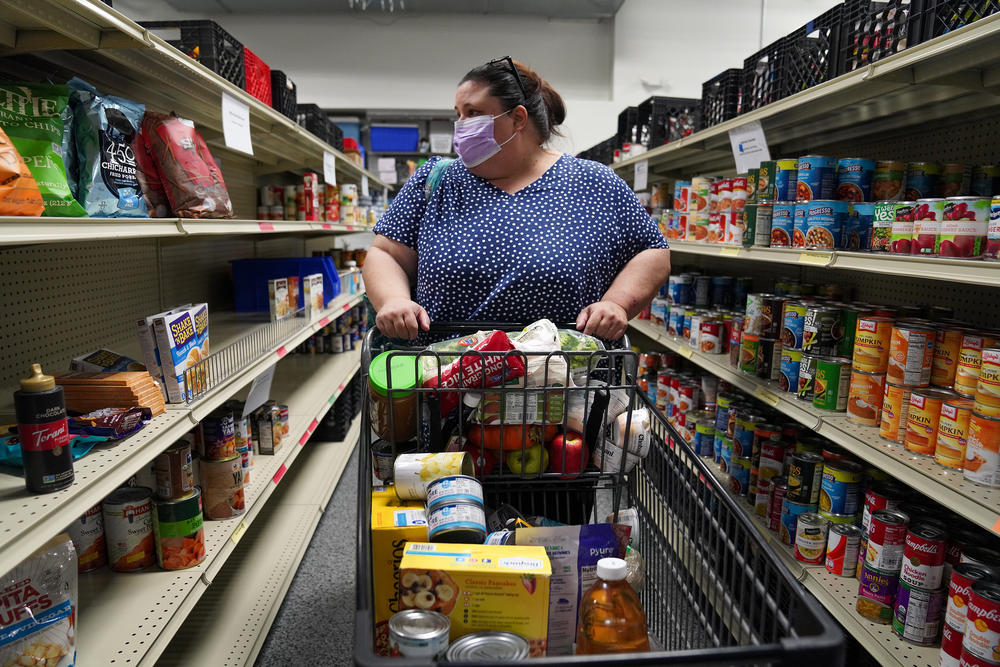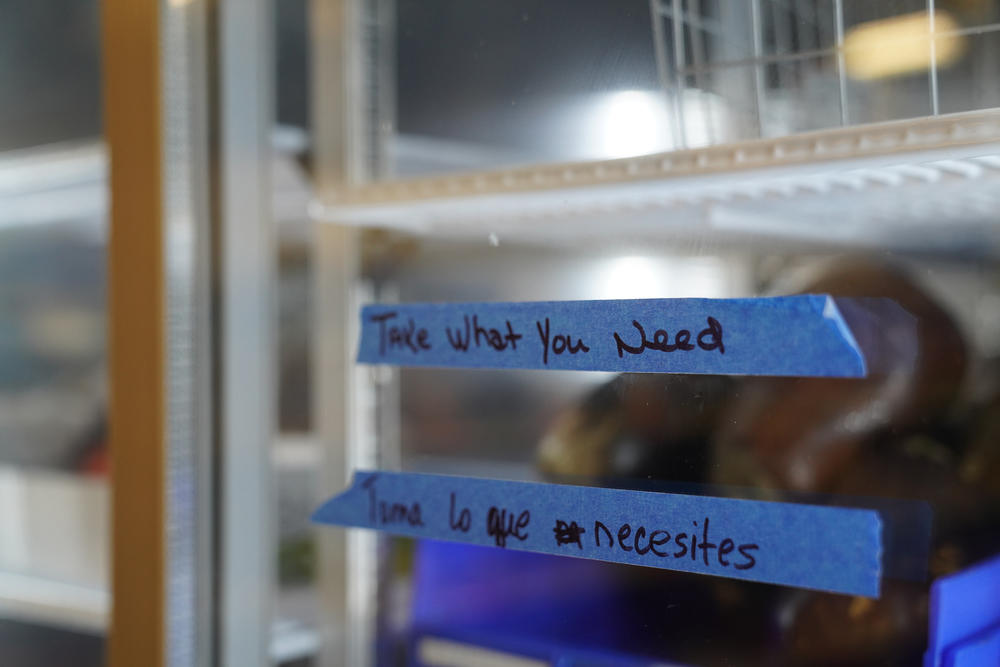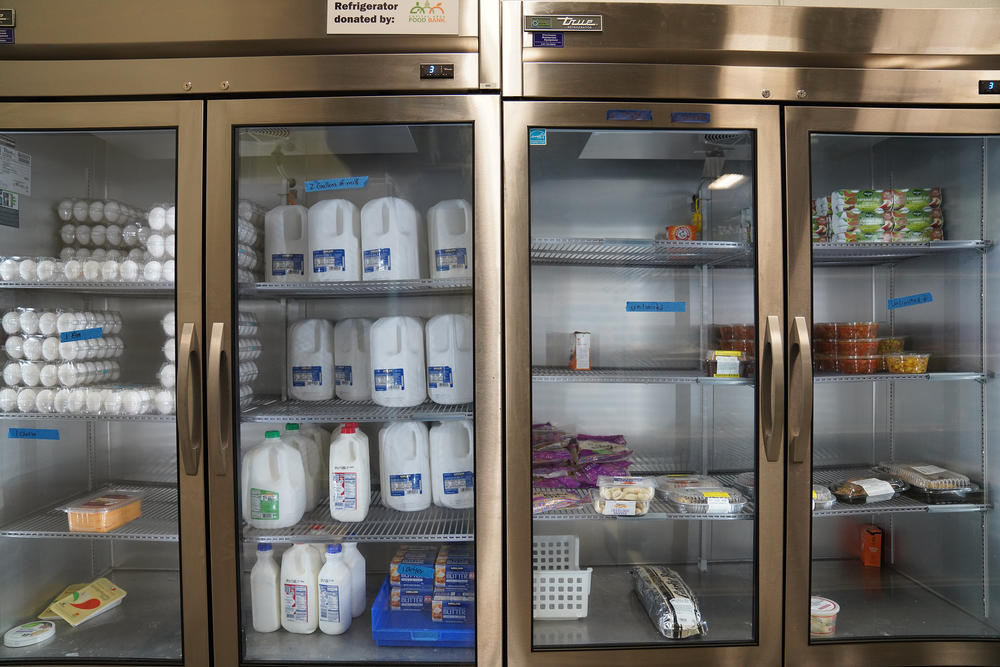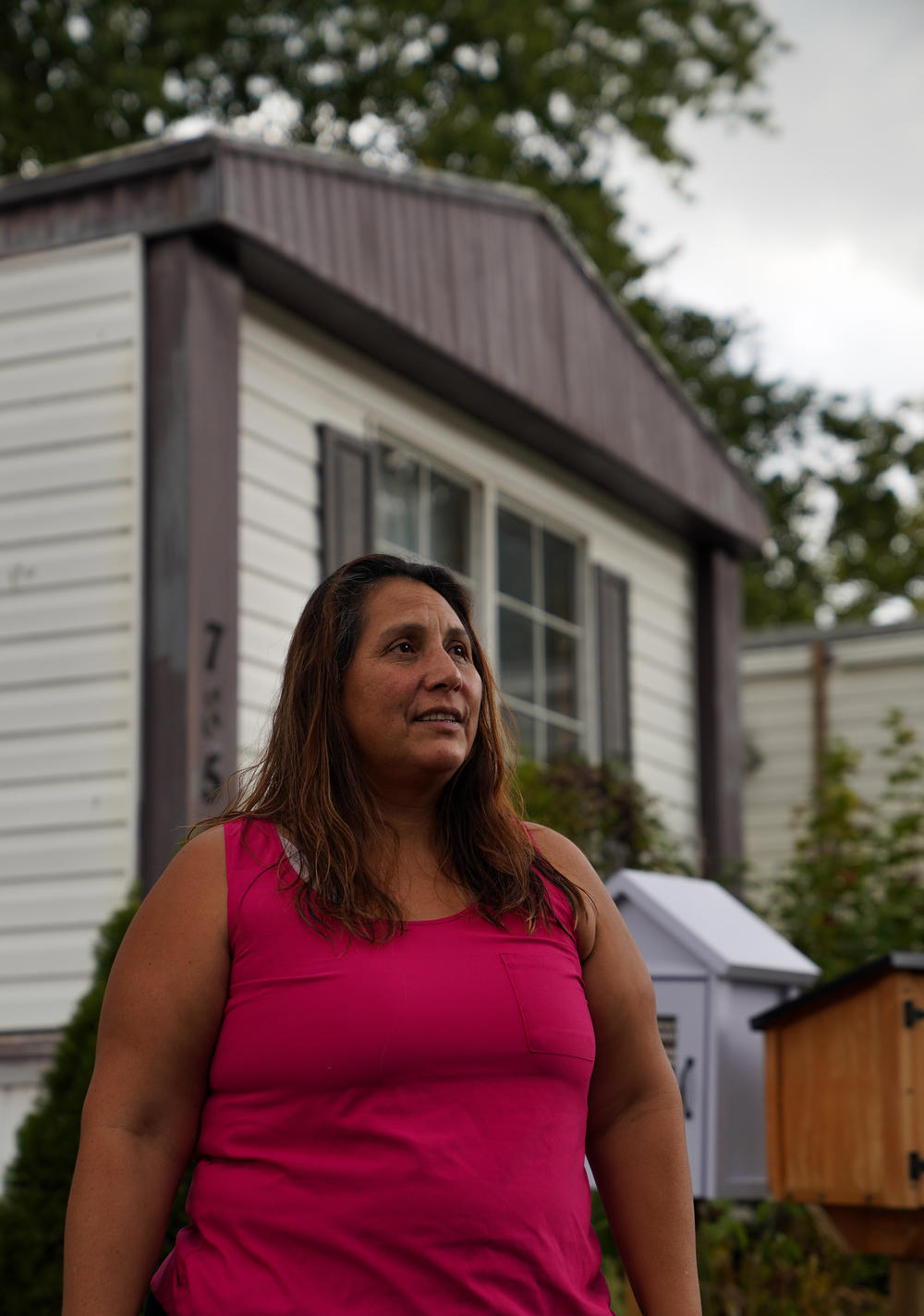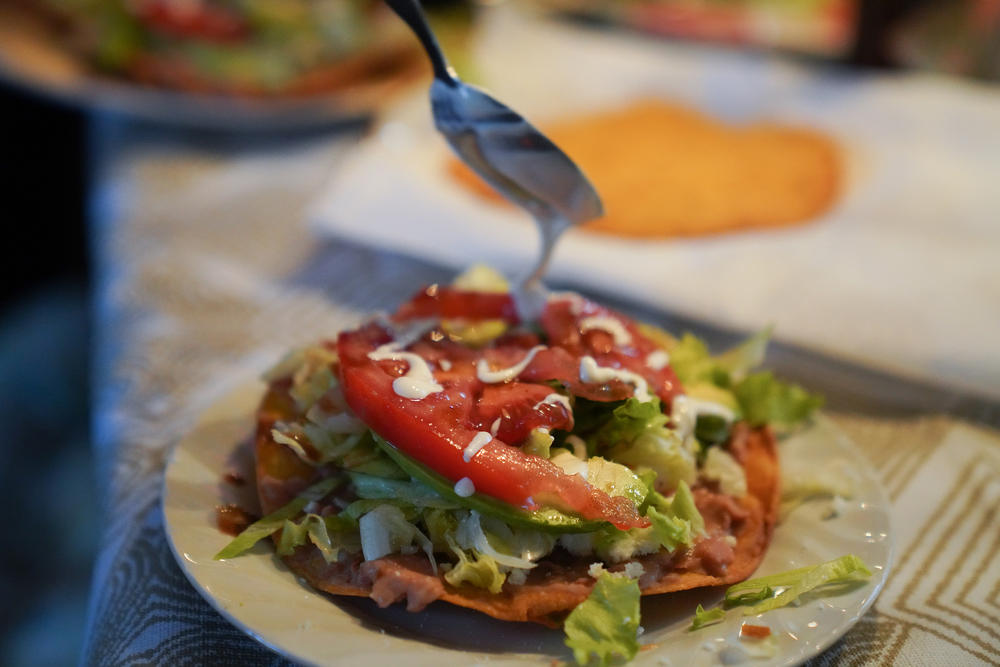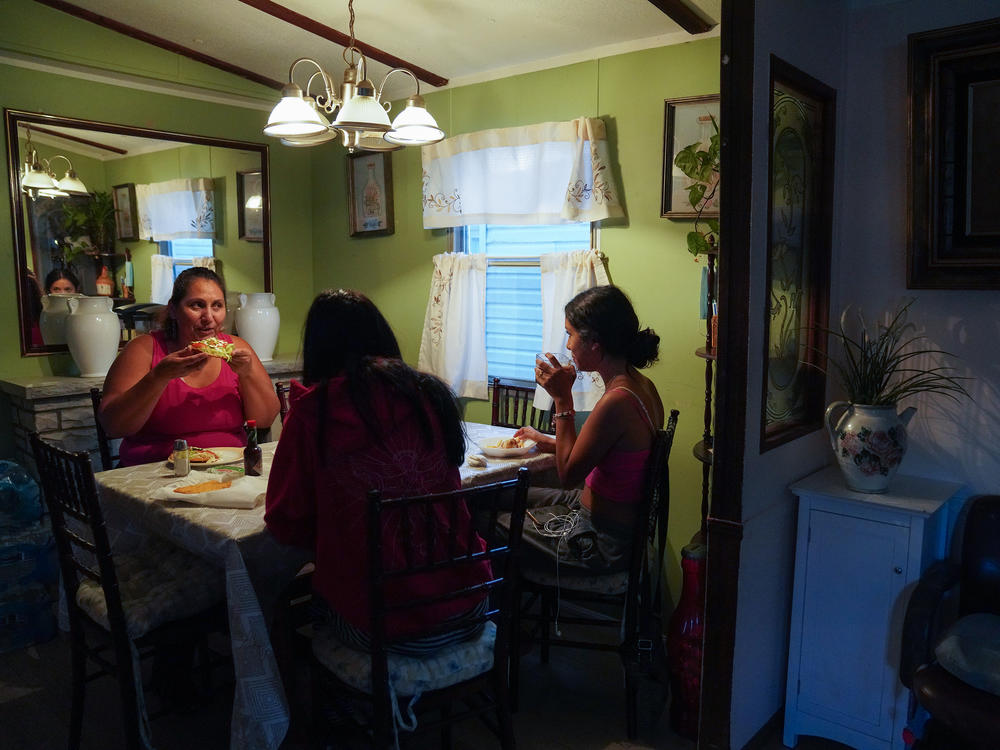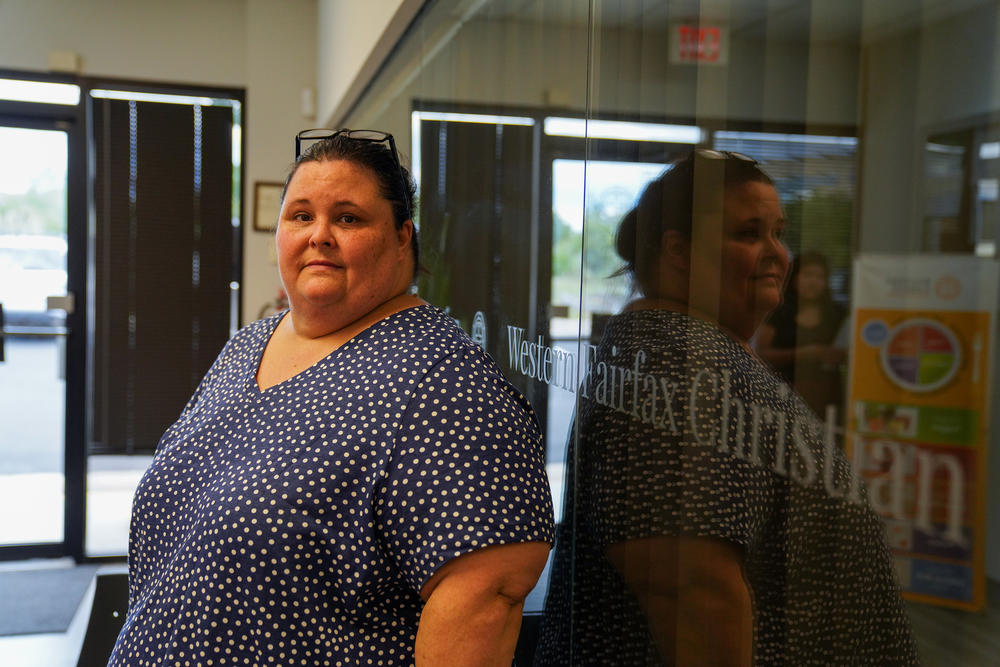Section Branding
Header Content
The hidden faces of hunger in America
Primary Content
Heather Thomas can count out the tragedies that pulled her family of eight into poverty. She and her husband lost their jobs and home, their small business folded, multiple relatives died and health crises pushed them into medical debt.
"It just went from a drip to a flood very quickly. And we just lost it all," Thomas recalled.
"Food was really, really, really tight. My husband's health, because of his conditions, there were times we just couldn't eat right. And one of his health conditions ended up getting a lot worse. We were rationing diapers... It was really bad."
They're among the more than 1.2 million people who struggled to put food on the table at some point last year in the Washington, D.C. region. That's a third of the population living in and around the capital of one of the richest nations on Earth.
Nationwide, more than 33 million people, including five million children, are food insecure, according to the USDA. No community is spared, with rural areas, families with children and communities of color disproportionately affected.
This week, the White House hosted its first conference on hunger in a generation, unveiling a national strategy that included decreasing obesity and diet-related disease — such as diabetes — through healthier eating, good nutrition and physical activity. The private sector and charities have committed eight billion dollars. But a divided Congress could set back some of the Biden administration's broader proposals that could help lift people like Heather out of poverty.
Living in poverty can trauma
Thomas, 47, was not always on this side of the poverty line. A social worker by training, she used to give bags of food and other donations to kids in need. In the not-so-distant past, the family lived in a three-story townhome they shared with Thomas's grandmother.
"Both my husband and I are college educated. My husband is an honorably discharged combat vet. And we've always worked since we were teenagers. I've worked in social services, in the human services field for over 30 years. And my husband served the military. And then when he got out, he's worked in different jobs," she said. "This could happen to anybody."
She spoke after picking up free groceries from the food pantry run by Western Fairfax Christian Ministries in Chantilly, Va. Signs on the sparse shelves indicated limits on some of the products — a pound of meat, two gallons of milk, two dozen eggs or five cans of soup per person. And she's only allowed one visit to the pantry per month.
"Living in poverty makes you sicker or causes you to become sick if you aren't and it's hard to get out of," Thomas said. "No matter how long you live in it, it causes trauma," she added, noting the stress caused her and her husband to develop PTSD, bringing her lupus and rheumatoid arthritis out of remission. The trauma in turn trickled down to the children, whose health has also "gone downhill."
A common scenario
As stark as it may be, their story is not unique.
"Coming out of the height of the pandemic with inflation being as sustained and high as it is, it's a hard time for many families," said Radha Muthiah, CEO of the Capital Area Food Bank. "As we are thinking about how our nation rebuilds in a more equitable and inclusive manner, food and food programs have a really critical role to play."
Her group distributed more than 64 million meals last year — more than any previous year and double 2019 levels. Meeting the growing needs of the most destitute people has required a fair amount of innovation. The food bank's Curbside Groceries is a store on wheels that has at least 12 stops in food desert areas. That includes Washington's Ward Eight, a predominantly Black area with higher poverty whose approximately 80,000 residents have very limited access to full-service grocery stores.
"When they're working multiple jobs, as most of our clients are, and they're having to drop off or pick up their kids from school, childcare, one or two hours to get to the grocery store is really quite a distance," Muthiah said.
"Systemic racism, lack of access to education, lack of mentorship, lack of access to banks, financial instruments, wealth building tools, lack of access to affordable housing — all of these things are at the root of food insecurity. And it's important, therefore, not just to address things at the surface and some of the symptoms, but also to address these root causes."
At Children's National Hospital, the Capital Area Food Bank has set up a food pharmacy so that doctors can prescribe healthy food to complement medical and clinical care.
Good nutrition is especially critical for children, whose minds and bodies are still growing.
"When they have that, they can focus and they can learn and they can absorb and they can dream and they can aspire," Muthiah explained.
Communities of color are hit hard
In good times and bad, Carla Claure peels, cuts and slices the freshest produce and meat she can find for her husband and her teenage daughters Alejandra and Daniela by the dim light of her prefabricated home. "It's beans, tortillas, maseca — I make my own tortillas — tomatoes and some cheese. It's good food. It's healthy food. It's good for the families too," Claure said as she prepared tostadas.
But fresh fruit, vegetables and meat are also some of the most expensive items at the store. And with rent costing nearly a thousand dollars a month, the food budget gets stretched thin.
Claure, 45, is from Bolivia and her husband is from Mexico. They live in a nearly entirely Hispanic trailer community in Alexandria, Va.
They both lost their jobs at the start of the pandemic — she couldn't clean homes anymore due to her clients' COVID fears, and work stopped at her husband's construction sites. So they had to rely on food stamps and donated produce.
Now, Carla helps facilitate distributions of donated food she and her neighbors can use. "Normally, I have food distribution here on Wednesday, fresh fruit. I have some there for a couple of days. And the rest I buy in Aldi. It's not expensive. Or sometimes it's in the Latino supermarket; it's good price too," Claure said.
Some of their neighbors are undocumented migrants who aren't able to access many benefits — or fear retribution if they try. "For Spanish [Hispanic] people without documents, whether your kids are citizens or not, you are not able to receive anything else... You are not able to make application for food stamps too," Claure said. "That's really hard for the kids, especially for kids, because the kids don't understand why we don't have food."
Muthiah, the regional food bank chief, says households of color with children struggle the most to put food on the table, with two-thirds of those families impacted by food insecurity.
"While the numbers across the board are unacceptably high, they are ridiculously high for those who are of minority population," she added.
That grim statistic includes Heather's family. Her husband is African American.
Food insecurity can come with stigma
Back at the pantry, Thomas said being poor requires sacrifices. She's had to make tough choices when deciding what to buy on her limited budget.
"You get very protective of the food because you can't just go out there and get exactly what you want. And sometimes parents don't eat, or they eat very little, so that their kids can eat," she said. "The junk food and the processed food is so much cheaper than the healthy food. What's wrong with that picture?"
Thomas called for having more people like her — with lived experience in poverty — to have a voice in policymaking on hunger. She's already active in that space herself — she and other advocates met with Housing and Urban Development Secretary Marcia Fudge last month.
"I would challenge anybody who does have what's considered a living wage to live on a sub-living wage. They wouldn't get very far," Thomas said. "You become creative and then you learn how to go without things, like Q-tips and other things that we take for granted become, like, prizes, right — Oh, cool, we got Q-tip money this month!"
For a family with three children with two working parents in Fairfax County, the living wage is $36.88 per hour per adult, according to an MIT database. That's nearly five times the poverty wage and more than three times the minimum wage.
Even today, six years after she fell into poverty, Thomas still hesitates telling people she relies on aid for food and housing. It took a full-fledged effort that lasted two years to find the appropriate programs for her family and fill out the associated paperwork before she finally received those benefits.
"You feel a lot of shame with it and people judging you," she said. "When you go to the store, it becomes like this secret."
The audio version of this story was produced by Chad Campbell and edited by Reena Advani.
Copyright 2022 NPR. To see more, visit https://www.npr.org.
